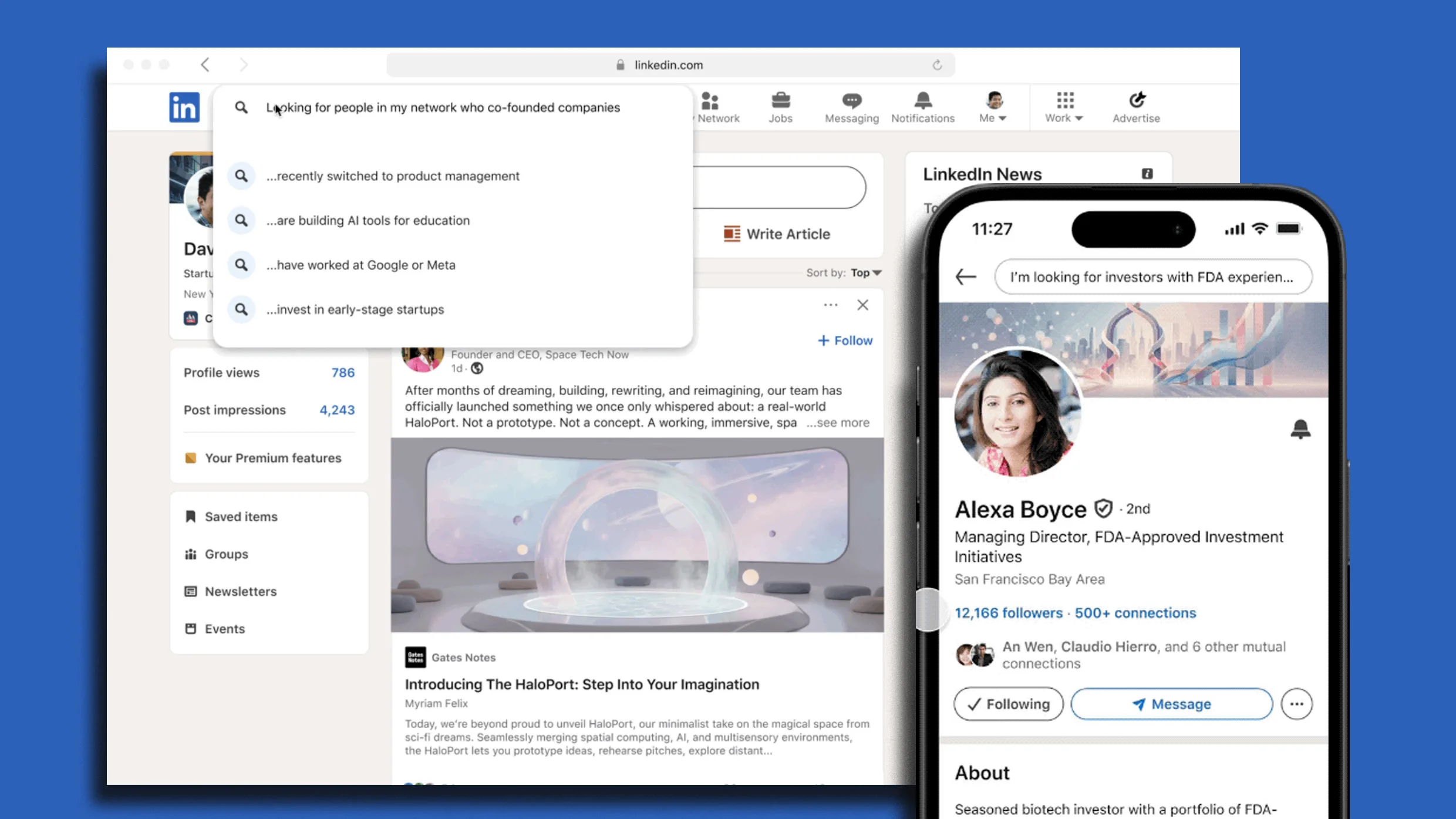Welcome to AI Decoded, Fast Company‘s weekly newsletter that breaks down the most important news in the world of AI. I’m Mark Sullivan, a senior writer at Fast Company, covering emerging tech, AI, and tech policy.
This week, I’m focusing on what AI pioneer Yann LeCun’s new company will likely build after he departs from Meta. I also look at Marc Andreessen’s jab at the Pope on ,Fei-Fei Li’s” view of the AI world since 2012.
Sign up to receive this newsletter every week via email hereAnd if you have comments on this issue and/or ideas for future ones, drop me a line at sullivan@fastcompany,com, and follow me on @thesullivan,
Yann LeCun, the AI pioneer who has led Meta’s Fundamental AI Research (FAIR) division since 2013, will reportedly leave that post to start his own AI research lab. LeCun plans to depart in the coming months, and has begun early fundraising discussions to support his new venture, the reports say. The new startup will focus on building “world models,” or AI systems that learn from images, video, and spatial data instead of relying solely on text and large language models.
After developing open-source Llama models that fell behind other LLMs, Meta has gone on a very lavish recruiting spree to hire world-class researchers for a new effort to build state-of-the-art models. Meta’s newest models, sources say, are likely to be closed-source, and are expected to follow the same general architecture and training methods used by rivals like OpenAI and Anthropic.
In other words, they will continue relying on the same transformer architecture invented at Google in 2017 (which kicked off the generative AI boom) while continuously using more training data and computing power to achieve intelligence gains. LeCun has been critical of that approach, and doubts that it has produced AI that truly reasons, rather than just detects patterns and predicts the next word or pixel in a sequence.
LeCun has called for more foundational research on alternate paths that could more quickly lead to AI models that can match or exceed human intelligence. His recent research has focused on “world modeling”—developing AI systems capable of quickly learning about the physical world as human babies do.
So expect LeCun’s new company to build new kinds of models, or systems of models, that learn and represent aspects of the real world, including physics, in new ways. It’s likely that these models will be trained through watching thousands of hours of video, instead of relying on text or still images. They will also likely be able to capture more nuances of the real world, such as state changes and transitions (how environments shift and evolve), than current models. Success might mean the creation of AI systems or robots with a far more advanced understanding of the world and how to take action in it, and that are far better at continuously learning from and remodeling the world as we humans do.
Marc Andreessen goes for a cheap shot on the Pope, faces backlash
Marc Andreessen, of the storied VC firm Andreessen Horowitz, is an AI accelerationist who might Twitter-block anyone even suggesting the industry should devote more time to safety and alignment. Now he’s facing backlash for taking a shot at the Pope on X last weekend when the Holy See called for morality in technology.
The Pope tweeted that the builders of our AI future should “develop systems that reflect justice, solidarity, and a genuine reverence for life.” (See the whole tweet here.) That was enough to trigger Andreessen, a committed MAGA cheerleader and close adviser to President Trump on tech issues.
Andreessen didn’t offer an argument, but posted a meme meant to convey a derisive and dismissive response to the Pope’s message. The meme was a still photo of gq‘s Katherine Stoeffel pointing a “What the fuck are you talking about?” expression at actress Sydney Sweeney during a recent interview. Andreessen deleted the tweet, but not before many on the tech side of Twitter saw it.
Some objected to a billionaire VC responding so blithely to the literal Pope. Others noted the irony of Twitter doing unto Andreessen as Andreessen has done unto others. “Pretty funny/surreal to see @pmarca dodge the woke cancellation mobs for the last decade, only to have his closest brush with cancel-death come at the hands of the very religious denomination who invented cancel culture in the 15th century,” VC Lee Edwards noted.
Still others took issue with the idea Andreessen seemed to convey, which is that VCs should invest in technologies that demonstrate value and make money, without regard for whether or not the technology will make the world a better or worse place or, perhaps, a safer or more dangerous one.
One of those was the widely followed tech commentator @growing_daniel on “The Pope’s entire point was that you should think about that and try to do good things.”
Daniel acknowledged that Andreessen and a16z have invested a lot of money in software as a service companies that have made businesses run better. But he also cites a16z’s $15 million investment in Cluely, a startup that originally billed its app as a tool to “cheat on everything” (meaning job interviews, exams, or sales calls).
How Fei-Fei Li describes the history of AI since ImageNet
Fei-Fei Li played a huge role in kicking off the current AI revolution when, back in 2012, she invented the ImageNet image training data set that taught AI models how to classify images. On November 12, her new company, World Labs, released its first model, Marble, a “world model” that has an understanding of the makeup of 3D environments (as humans do) and can imagine and generate them based on text, images, or video uploaded by the user. These environments could be used in anything from game development to VFX design to digital twins, she believes. From ImageNet to world models, Li has come a long way. When I spoke to her I asked her to describe her view of the AI revolution as it’s happened so far. Here’s what she said.
I think the world model is a fairly natural but significant continuation of the generative AI era, The generative AI era is the latest of the, , , deep learning revolution, … In 2012 we started the deep learning revolution by squarely establishing the three forces of AI: the neural network, data, and computing chips or GPUs, Every progress we’ve made in AI so far continues to bank on the power of these three fundamental elements of modern AI, And one of the most important milestones was the transformer model, The sequence-to-sequence modeling for language really unlocked a fairly powerful scaling law that gave rise to large models that can be trained by a large amount of data (to) become very powerful and generalizable, First out of the gate were large language models,
And the derivative of large language models are these multimodel large language models (which understand not just words, but audio, video, images, and code). They are still built on the backbone of large language models. But I think the large world model is really a significant step towards unlocking AI’s capability.
Interestingly, Li suggests that as the AI industry pushes toward models that are generally as intelligent as humans, then generally far more intelligent, researchers may need to rely on more than just the transformer model architecture that ignited the industry in 2017 and led to things like ChatGPT. (The “GPT” stands for “generative pre-trained transformer.”) She explains:
I would say this goes beyond the transformer. It’s still early. So the model architecture is still subject to research. But you know the recent progress in transformer models (and) diffusion models and beyond are part of the exploration but I wouldn’t call it solidly owing to transformers.
More AI coverage from Fast Company:
Want exclusive reporting and trend analysis on technology, business innovation, future of work, and design? Sign up for Fast Company Premium.
The early-rate deadline for Fast Company’s World Changing Ideas Awards is Friday, November 14, at 11:59 pm PT. Apply today.












